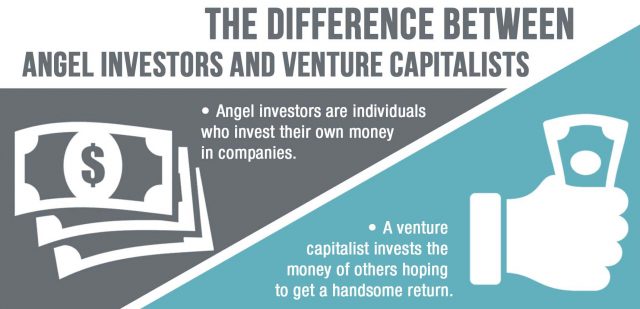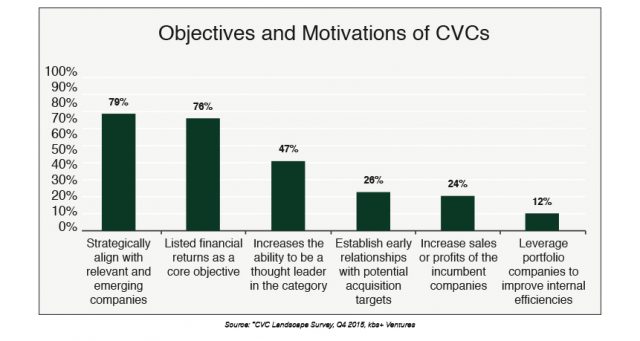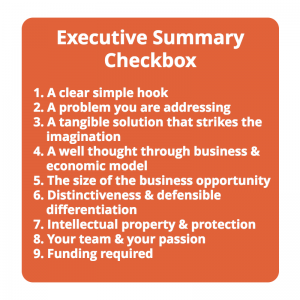Table of Contents
You’ve got your idea, your team and a plan all in place and all you need is the funds to execute. Securing funding is a challenging process for every entrepreneur. A startup founder has to look ahead into the future and consider all the various funding stages, as the different stakeholders – friends and family, angel investors, venture capitalists (VCs), early employees and more – that come on at each stage all have the power to influence the direction of the business.

Source: BusinessPlanTemplate.com
Some well-known startups such as version control repository and Internet hosting service GitHub and payment service provider Braintree bootstrapped for a long time before acquiring funding or being acquired. But let’s get real – most startups will require funding by external investors or the resources to keep it going will run out. Here, we give you the lowdown on two categories of potential investors – angel investors and VCs – and what you should consider when you are going through the funding rounds.
First off, an angel investor is a high net worth individual who invests his own money into companies. In contrast, an institutional venture capitalist (VC) is a professional firm that raises money by offering investors a chance to take part in a fund that is then used to buy shares in private companies, then invests in companies using money from that pooled capital fund.
Claim your Free Trial. Start drafting legal documents with Zegal today.
Stage of investment
Angel investors typically invest in deals at an earlier stage of the startup’s lifespan than VCs. That’s why the angel round comes before the VC round. The fact that VCs use other people’s money instead of their own naturally affects their risk appetite. Angel investors are comfortable investing at the seed stage when the startup has a prototype and is still building the product, while VCs typically only vest from Series A funding round onwards when the startup starts to demonstrate high growth potential.
Amounts invested
Given that angel investors typically invest at an earlier stage, they also tend to invest in smaller amounts. However, angel investors fund more companies than VCs do – in 2011, angel investors invested more than $22 billion in approximately 65,000 companies, whereas VCs invested about $28 billion in about 3,700 companies.
Involvement
While angel investors have equity in your business, they usually will not have a seat on your board. As such, they can be as hands-on or hands-off as you want. In contrast, VCs typically take a seat on your board and have a say in how your company is run. This is not necessarily a bad thing. Apart from the funding that private investors bring, many startups also tap on the guidance, expertise and network of their investors.
Timeframe
VCs’ decisions on whether to invest in a startup typically take a longer time than angel investors. As VCs are professional institutions, they tend to have a thorough due diligence process that they will undertake before making the decision on whether to invest. On the other hand, angel investors are investing their own money and have no obligation to third-party investors. They may not follow a defined due diligence checklist, which allows them to make decisions more quickly.
Motivations
According to a survey of corporate VCs, the most common motivations for investing in startups is to strategic alignment with relevant and emerging companies and financial return. And in traditional VC firms, it is no secret that the main motivation is return on investment as soon as possible.

Source: CB Insights
In contrast, angel investors are motivated by a greater range of reasons when investing in startups. While making a return on investment definitely factors into the decision-making process, angel investors may also be out to help less experienced businesses within their sector.
How do I get the attention of an angel investor or VC to fund my startup?
Now that you have a clearer picture of the type of investor you should seek for your startup, the next step is putting together a compelling executive summary for engaging potential investors. An executive summary should contain the following elements:

To facilitate private investors’ decision-making process and align with their motivations for investing, it is crucial that you do thorough research on your potential investors – whether angel investor or VC – and build an executive summary that will appeal to them. Even seemingly non-crucial elements such as a section on the founders and your team matter. According to a Harvard Business Review study, angel investors place great importance on the team and founders when deciding whether to invest in a startup.
Most importantly, it is essential to customize your pitch to your audience. When building your executive summary, make sure you consider whether your potential investor is appropriate for your current funding stage as well as the level of involvement they may have in your business when they come on board.
Alex Tanglao
Alex Tanglao is a seasoned professional with expertise in startups, legal technology, and business management. Alex has held leadership roles, including Director of Strategy & Operations at Elevate Digital, where he streamlined operations and managed teams, and Director of Ecommerce at Allies of Skin, driving global growth. Alex served as Marketing Manager at Zegal, driving legaltech and educating businesses on startup legal topics. With a background in content strategy from LawPath, Alex combines a deep understanding of legal services with operational excellence and innovative marketing strategies to help businesses thrive in dynamic, fast-paced environments.






